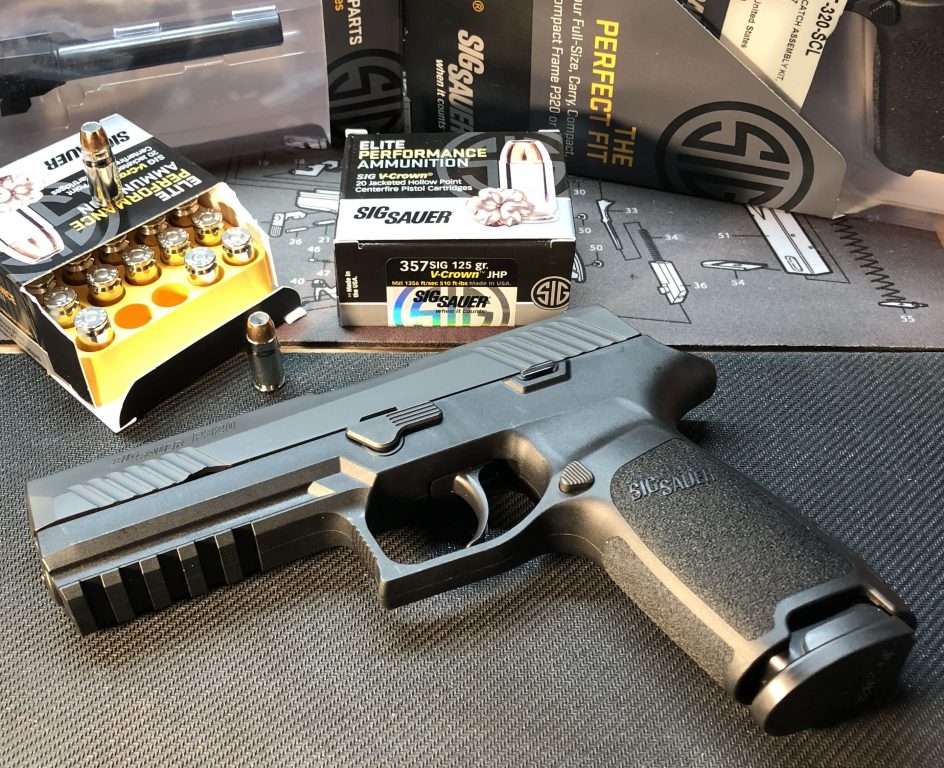52% of State’s Law Enforcement Agencies Don’t Use Federal Gun Tracking Tool
Study finds under use of free federal program which can trace illegal sources of guns.

SIG Sauer P320 handgun. Digitallymade, (CC BY-SA 4.0), via Wikimedia Commons
A new study finds that law enforcement agencies in Wisconsin are under-utilizing federal tools for tracking guns.
Law enforcement agencies can sign up for a free online platform called e-trace, which enables the U.S. Bureau of Alcohol, Tobacco, Firearms and Explosives to track the path of guns involved in suspected crimes. An e-trace request can turn up valuable information, including the firearm’s manufacturer, its importer and its first retail purchaser.
In Wisconsin, only 48 percent of law enforcement agencies participate in that initiative, according to the study.
And, of the Wisconsin agencies participating in e-trace, only 27 percent are signed up to share that data with other agencies in the state through what’s known as collective data sharing.
The research was published by The Joyce Foundation, which advocates for stricter gun control measures.
The study found that smaller police departments are less likely than larger agencies to participate in e-trace. Smaller departments were also less likely to share that data statewide.
Lack of awareness is a major reason why, said Tim Daly of The Joyce Foundation.
“They simply don’t know much about it,” Daly said. “And they don’t know much about it because the chief agency responsible for making people aware of it, the ATF … has been so constrained in their resources and their people that they just really aren’t able to go out and explain what it is and what the benefits are.”
And Daly noted that local law enforcement agencies are dealing with their own limitations.
“Even though it’s free to sign up, they still need to commit, you know, a person or people to pursuing these strategies,” Daly said.
Nationwide, about 55 percent of law enforcement agencies were signed up for e-trace, making Wisconsin below average, the study found.
The three states with the highest e-trace participation rates — New Jersey, Virginia and North Carolina — all have policies in place that require law enforcement to trace all guns involved in suspected crimes. In New Jersey, where 96 percent of agencies were signed up for the program, state law specifies that the tracking must be done via e-trace.
Nationwide, only 46 percent of gun-related murders are solved each year, which is lower than the case clearance rate of murders with other types of weapons, according to recent data from the Federal Bureau of Investigation.
“Another significant driver of decreased clearance rates is the fact that more homicides are now committed with guns, because gun homicides are especially difficult to solve,” the Joyce Foundation study noted. “The use of a gun allows for physical distance between the perpetrator and victim, which reduces the likelihood that genetic evidence is left behind or that the crime is clearly witnessed.”
Daly said federal resources like e-trace are among the tools that could help close more cases involving guns.
“We know that more than 50 percent of law enforcement agencies are not taking advantage of these tools, tools that we know can address the clearance rate crisis, which is so closely connected to the gun violence crisis,” he said. “We’ve got to find a way to increase participation.”
E-trace can help authorities identify illegal sources of guns, “including straw purchasers, gun traffickers, and unscrupulous gun dealers,” the study said.
But law enforcement officials interviewed for the study noted that processing times for e-trace requests can be slow and unpredictable. They also noted that the usefulness of those results can be limited, since tracking ends with a gun’s first retail purchase. That means the database won’t provide more-recent information about guns that change hands multiple times before being used in a crime.
Among other recommendations, the report calls on lawmakers to allocate more resources to the ATF, so it can analyze gun data in a more user-friendly manner, and speed up its turnaround times for gun tracing.
According to the ATF, the average e-trace processing time is 16 days, which is more than double the agency’s goal of seven days.
Which Wisconsin agencies use federal gun-tracking tools?
The Joyce Foundation obtained a list of local agencies participating in e-trace and collective data sharing through a Freedom of Information Act request to the ATF.
The foundation has has since published the entirety of that data. WPR filtered that data to include only Wisconsin agencies and compiled it below in a searchable format.
To search the database, start typing the name of a law enforcement agency or the county in which it’s located.
Wisconsin law enforcement agencies underutilize gun tracking tools, study finds was originally published by Wisconsin Public Radio.
If you think stories like this are important, become a member of Urban Milwaukee and help support real, independent journalism. Plus you get some cool added benefits.





















I read an article a decade ago about an eastern state’s gun tracking. Of all guns recovered at crime scenes, roughly 60% were stolen. However, they were not reported “stolen” until police arrived on the doorstep of the buyer of record.